Don't wanna be here? Send us removal request.
Text
Sports Media Internship [BSM307]
Preparedness prior to commencing the internship and assimilation into the organisational culture
One of the keystones for educational institutions offering students internship programs is the transitional experience from the classroom to the workplace, where interns absorb practical knowledge and skills alongside common workplace skills (Maertz et al. 2013).
As I have stated in previous Tumblr entries for earlier subjects, the internship program at Holmesglen was unashamedly the driving reason for me enrolling in the sports media degree in the first place.
Now that I’ve begun the second semester and internship program is upon us, I’m excited and nervous at the same time.
Following on from the ‘Transitioning to Professional Practice’ subject we had in semester one, I’ve been utilising many of the tips and interviewing skills we’ve learned throughout semester one while applying for the position descriptions (which I have found quite daunting).
I had plenty of anxieties after submitting my CV’s but having secured six interviews from the eight internships I applied for, I am feeling quite confident about myself heading into the internship itself.
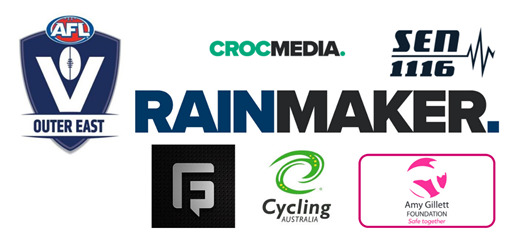
Some of the feedback I have received regarding my experiences I’ve sought outside of the degree has been really positive. In fact, one of the organisations said I was the perfect candidate and that my CV’s was the standout ‘by the length of Flemington straight. One of my primary concerns during my time at Holmesglen has been securing opportunities outside of my studies to set myself apart from the other students, so that feedback meant a lot.
‘When a recruiter receives hundreds of those bulleted documents, that most probably look and read the same, it can be really difficult to know how to make yours, you and your credentials for the job stand out among the masses’ (Blair 2019, para. 3).
I believe I’ve put myself in the best position to perform and succeed as I enter the scary and exciting sports media industry.
It was an absolute pleasure for me to be offered a hybrid internship involving my top 2 preferences: Rainmaker and SEN. It’s an opportunity I jumped at and it has worked out better than getting one internship one or the other in my opinion.
I’ve begun my internship at Rainmaker quite nervously I must admit. The internship was one of the driving forces for me enrolling in the degree in the first place and now I’m here, it’s quite surreal.
The first few days I typically found myself twiddling my thumbs a bit as a look to find my feet, but I really feel like I’ve blended into the culture at Rainmaker. Obviously, I share interests with the employees there (sports and broadcast production), but even still I’ve been made to feel very welcome.
I made some mistakes, but I’ve received great encouragement while being shown the ropes. As I move forward with the first half of my internship, I’m a bit concerned as to how I’m going to get the 114 hour mark. The plan is hopefully to get an opportunity to work in the studio and create a small program myself so that I have something to show for my time, and something to soak up my time.
Reference List
Blair, O 2019, 8 hiring experts on how to make your CV stand out, viewed August 8 2020, https://www.cosmopolitan.com/uk/worklife/careers/advice/a33054/how-to-make-cv-stand-out/.
Maertz, P, Stoeberl, C & Marks, J 2014, ‘Building successful internships: lessons from the research for interns, schools, and employers’, Career Development International, vol. 19, no. 1, pp. 123-142, viewed August 8 2020, https://d1wqtxts1xzle7.cloudfront.net/46895517/Building_successful_internships_lessons_20160629-7050-1i7jdyz.pdf?1467232230=&response-content-disposition=inline%3B+filename%3DBuilding_successful_internships_lessons.pdf&Expires=1596861812&Signature=H52uEpN4p-tp6qtUld3zeHzcARPyIYFEx1j1MKFuM0FCY-wUlkZorM3TFP3cRiE5eBkiCqcyHeo2TkbM5MEyvZXOww04VY1ZreR00GBNM8z9rfZAEybgbrMUlNwKyHSBEXDO6v6OBfnWwlD9CLjdaoOkamPp9foSgODfRXXJZtnLGJg7TA9hvBxiPac4S5MG1KVDJgqebFx4ckSuevAOo0G8M8l93mvs7nW0Os8ARqjTCOr45wU4fgnFoU8oVpC5yilH-dLQ8tsrfslaD17QA68lGxfnaVdrVY9D9TJ-uOevTtBXfVrMyqpuFf0BpVit87PG2eH4jYzvCf2RX~EJOA__&Key-Pair-Id=APKAJLOHF5GGSLRBV4ZA
~~~
Finding my feet in the internship and completing initial tasks (i.e. first 40 hours)
The transition from lecture rooms into the workplace can be stressful, as students may struggle to understand their role and responsibilities initially in new environments. According to van der Zwet et al. (2011) while being newcomers to the workplace, students can take time to become accustom to rules, professional hierarchies and interactions within the new workplace environment.
My first few days and shifts at Rainmaker have been rather enjoyable, if not eye opening. Somewhat surprisingly, I have been working in house as oppose to remotely, which I’ve been grateful for. Having the chance to meet all the crew and be shown where everything happens (tv production, radio etc) was great, including having my own desk.
Most of my first few hours at Rainmaker were spent learning the ropes. David, Kane and Hayden showed me many tricks they do in terms of capturing visuals. My first task was to go through their program and record all the games through the end of the season (from halfway through round 15 to 17) so all vision required for promos/highlights etc where in the system. The guys also put me to task on capturing some goal highlights from Melbourne’s Christian Petracca from a game that previous weekend, which they were pretty happy with.
All in all, the guys I met through my first couple of shifts have helped me settle into the organisation structure really well, and I continue to meet more employees who all seem to be great guys and girls.
One of the first programs I was a part of was a pre-recorded program for a technology company called ABB. I played the role of the Electronic Visual System (EVS), playing the visuals and still graphics when prompted. I had to keep everybody alert as to when each clip would end, shouting down from 10, which I felt a little bit silly doing.
The first live broadcast we did was the Healesville Cup, which appeared live on the Greyhound Racing Victoria Facebook page. While I didn’t play too much of a role whilst on air, I did work with the graphics, renaming them so they distinguishable and putting in order to replicate the rundown sheet. Watching the broadcast live and seeing the scheduled rundown get thrown about was quite interesting to watch.
https://www.facebook.com/watch/?v=232442071526836
I also got my hands dirty with a couple of other programs, including The Winners (hosted by Jack Heverin) and the Essendon Football Club best and fairest award. During The Winners, my role was as floor manager, where I ushered the talent from ‘the background’ to the plasma when time come for their segment.
The best thing for me was to experience having the headset on and trying to sort stuff out on the floor while having somebody yell at me through my earpiece from the control room.
For the Essendon B&F I was in charge of the teleprompter, which I really enjoyed. Although there was a moment where I forget to prompt host Julien De Stoop that we were throwing to a graphic (which can be seen in the video below at 23:09).
youtube
I’m learning more and more and Rainmaker, and I truly appreciate the guys making me feel as welcome as they have. It’s time for me now though to become more proactive and ask questions and keep myself busy to get the best out of the opportunity Rainmaker have afforded me.
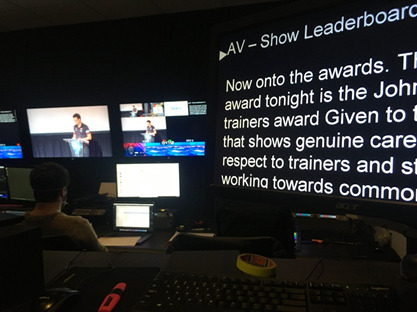
Reference List
van der Zwet, J, Zwietering, P, Teunissen, P, van der Vleuten, C & Scherpbier, A 2011, ‘Workplace learning from a socio-cultural perspective: creating developmental space during the general practice clerkship’, Maastricht University, viewed 24 September 2020, file:///C:/Users/Brent/Downloads/Zwet2011_Article_WorkplaceLearningFromASocio-cu.pdf.
~~~
Being an effective team member, contributor, building confidence & being efficient
Kira & Balkin (2014) discuss how individual identity can make an impact on the organizational environment as employees attempt to achieve alignment between work identity and work environment.
To that end, I have endeavored to portray myself as a willing contributor during the early hours of my internship at Crocmedia. While I feel like I have blended in to the group of people that work at Crocmedia (Rainmaker in particular) well, trying to be an effective team member has been somewhat of a challenge.
Like in most workplace environments there is of course already an established hierarchy, with everybody playing their own role. This is particularly important in television production obviously, especially during live broadcasts. As such, I have found myself sitting on the sidelines a little bit during broadcasts while only performing what I would describe as periphery tasks. It’s not quite an environment where I can use my initiative to do my own thing, in fact sometimes all I feel I can do is ask individuals if there’s anything I can help with (and sometimes there is).
Having said that, I am certainly getting more and more confident with some of the tasks I’ve been set that I’ve done multiple times. The floor management role I’ve had on our Saturday mornings has been great, and I’ve grown in confidence since my first attempt managing where to go.
Becoming more confident in this regard has ultimately helped shape me into a better contributor who can be trusted to do what I have to.
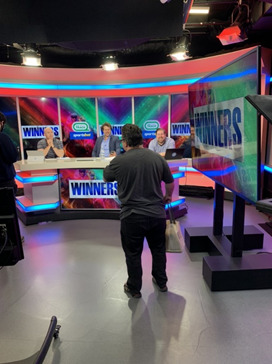
While I have been shown a myriad of other roles, I feel as though I have not yet really had the opportunity to sink my teeth into them. In all honesty, this has left me a bit frustrated as I do get the sense that the director and producer (Kane and David) want to ask me to lend a hand with something, but pull short of asking because they’re unsure if I can do it (which of course is true when I haven’t had a sufficient go at those particular roles).
One definitive example of this was during the pre-recorded Cox Plate program when I was asked to copy some questions that had come through for the talent via Twitter onto the teleprompt. Once the email come through I chucked them in and was good to go, until I was told to go and collect the pieces of paper from the printer with the questions on them and give them to the talent.
Maybe the producer just thought that was the better thing to do, but I already had them in the teleprompt and am capable using it, so I’m not quite sure what to think.
I know moving forward we’re set to learn some other great skills which we’ll need to learn and I’m excited for.
So far I’ve been punctual, approachable, I’ve done whatever I’ve been asked to do, and I’ve been efficient doing it. Both Kane and David have assured both myself and the other intern we’re doing a great job, which I hope they mean sincerely as I know I’m capable of much more they’ve asked me, Brent, an effective an reliable team member, thus far.

Reference List
Kira, M & Balkin, D 2014, ‘Interactions between work and identities: Thriving, withering, or redefining the self?’, Human Resource Management Review, vol. 24, no. 2, pp. 131-143, viewed 7 September 2020, EBSCOhost Database.
~~~
Challenges (the nature of the work, working hours, motivation, tabling of ideas)
‘The application of strong measures of time control is paramount for the attainment of our organization goals because it has an inverse relationship with self-management, productivity and environment’ (Rombe 2016, p. 204).
One of the major skills I have developed during my time at Holmesglen has been juggling the degree requirements with personal responsibilities. Early in the degree it become apparent to me that I was going to have to obtain a diary and note everything I need to do on a weekly basis throughout the semester and be organised for once in my life. Throughout the early hours and weeks of my internship, time management has been paramount despite proving tricky.
In recent weeks I’ve been in at Crocmedia for 6 -8 shifts, which of course has meant I’ve had to designate time within a week to nail uni assessments rather than do what I need to do at any time during that particular week. With a myriad of commitments going on late in the semester (internship, assessments and my weekly radio show), my time management skills have been tested during the final semester of the degree.
While in it at Rainmaker, the time spent there seems to be either hectic or mellow. There doesn’t seem to be much in between. Much of the time is spent prepping for the shows and webinars a few hours before hand, and then live broadcasting (that’s the hectic part). There’s been some downtime during my time there where I’ve had the opportunity to tick of some uni stuff, which has been invaluable.
The last few weeks where my internships at Rainmaker and SEN have proven difficult, not just with time management but so many knew things to learn. Unlike Rainmaker, I’m not in the building for SEN, so everything is done virtually including the instructions I receive through their communications channel ‘Slack’. This has proven difficult because obviously it’s not like face-to-face communications where I can be shown and ask questions. This has proven extremely difficult trying to grasp information and I get the feeling the frustration is mutual, which has led to my reflectance of tabling ideas for yarns and overall motivation.
Heryati (n.d.) discusses how positive communication within the workplace is key to employee motivation, not merely relying communications via email but also on a personal level.
I feel as though I’ve given a good account of myself during the degree, achieving great results on many assessments and managing to keep my motivation levels high. However, as we head towards the end of the semester and the halfway point of the internship, my motivation is beginning to wane. I think with the end of the semester nearing, the hectic end to the semester and the way the year has unfolded (or more like unraveled) all play into the fact I feel burnt out approaching the end of the year and degree.
I feel incredibly lucky that I’ve been able to be one of the few students allowed to go in to the internship headquarters and work alongside professionals. This indeed has been incredibly valuable, and I don’t struggle for motivation once in the building. But with the heavy workload and the slight underwhelmed feeling I’ve been left with during the internship, I’m longing for the finish line.
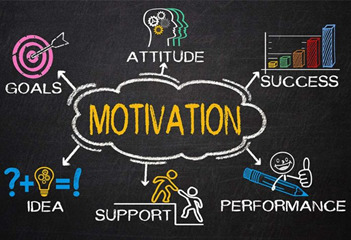
Reference List
Heryati, R n.d., Why Employee Motivation Is Important (& How to Improve It), viewed 25 October 2020, https://inside.6q.io/employee-motivation-important/
Rombe, M 2016, ‘Effective Time and Self-Management, Environment and Productivity in an Organization’, Science Journal of Business and Management, vol. 4, No. 6, pp. 204-211, viewed 25 October 2020, EBSCOhost Database.
~~~
Achievements and milestones both technically and professionally
‘Recognition often is the fuel to motivation, which in turn creates success for a business’ (Daihl 2018, para. 1).
As I approach the midway point of my internship there have several instances that I consider personal achievements within the organisations I’ve worked with.
With Rainmaker in particular, I’ve received positive face-to-face feed back after a lot of the little tasks I’ve been given have been completed. One of the live streamed shows we did for the spring racing carnival was a show called ‘Ladies Night In’ for the Ladbrokes Cox Plate. My role during the show was to chauffer the guests to the desk but to also place and remove props within the given segments (and there were a lot of props).
There were times when I only had 60 seconds to get props into and out of the shot, so it was imperative that I familiarised myself with the rundown and didn’t muck it up. Afterwards, the director Darcy told me he wouldn’t have been so stressed about it if he’d known how quick and productive I was. It wasn’t a big challenge for me personally, but it was the act of going through the rundown (the likes of which I’d only seen since commencing the internship) and prepping for when it was time to do what I had to.
Afterwards, I was thanked and congratulated by the whole team, which made me feel like it had all goon smoothly (which is the best thing that could be said I suppose).
youtube
With the SEN digital team, one of the real thrills of the internship has been having some of my work published and my name appear on the website. It’s bizarre to think that I’ve contributed to a website which I have long been a member of the audience. While I’ve done a bit of work individually outside of the degree that has spread my name a touch, it’s still a novelty that won’t wear off for a while.
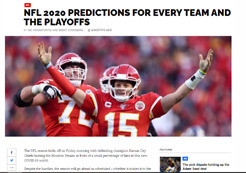
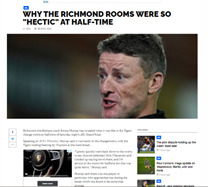
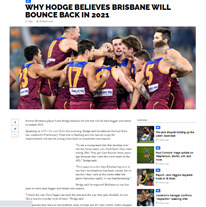
While working with the digital guys at SEN I’ve also been in charge of time coding (for future quoting reference) and tracking our social posts (making sure we hit sponsored content targets). When I’ve completed this, supervisor Nic has given me some nice feedback, telling me how hopefully this has been. I’ve found that doing a good job with something that really helps the team has boosted my confidence to the point where I’m feeling more comfortable engaging with everyone in the messaging system we use called Slack.
Working with a lot of these audio and tech wizards has also benefitted me in regard to creating my own content. There’s been several tricks of the trade I’ve learnt from Kane at Rainmaker in regard to the Adobe programs we use (namely Photoshop and Premier Pro) that have been vital.
As such, I’ve been able to implement some of these tips both for assessment purposes and with my own radio content, too, so that my work I create looks like I know what I’m doing (which might nit have been the case beforehand).
Reference List
Daihl, J 2018, Why is it important to celebrate milestones at work?, viewed 9 November 2020, https://ideas.baudville.com/the-baudville-blog/why-is-it-important-to-celebrate-milestones-at-work.
~~~
Career aspirations including goal setting (and reflections on submitting 2 real world job applications)
‘By setting sharp, clearly defined goals, you can measure your progress and continuously motivate yourself to progress toward the vision you have for your ideal work life’ (Berkely para. 20).
My career objection upon enrolling in the degree at Holmesglen has been to become a respected sports broadcaster within the sports media industry. All the decisions I have made during my three years at Holmesglen, from the effort I put into practical assessments, to opportunities taken outside of the degree and internship placements.
I’ve known for a while that the industry I’m looking to work in have two key entry points: knowing somebody who is already established within industry and climbing the ladder (i.e. with an advanced portfolio of work). All of the guest speakers we’ve had confirmed this, so I’ve set about building my portfolio. While I don’t know anybody personally in the industry, my contacts have grown substantially since enrolling in the degree.
One of my first goals was to begin calling the football at a local level to showcase my ability first to the people immediately around me (co-callers, friends and family that might listen etc). Long term my goal will be to build a portfolio of calls I think are good enough draw attention from commercial radio stations.
My other goal to host my own radio program has kicked off this year too with my weekly NFL show on the same station. Again, the idea was (and continues to be) to build a show from scratch that is produced, hosted and disseminated by myself.
To have these two opportunities to call and host are my small steps to bigger opportunities in the future.
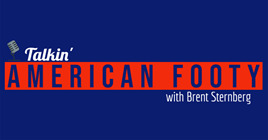
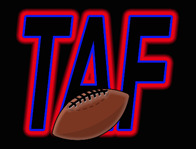
For the purposes of this assessment, I applied for two job applications that are in the realm of work I see myself doing post the degree.
The first position I applied for was as an overnight announcer on the Sports Entertainment Network. Being completely honest, I know I’m not qualified as things currently stand, however this is a position I can see myself doing in the future. Also, I know that if I continue along the path I am with calling football games and hosting/producing my own show, I will have the capabilities to apply again the future. My goal is that at such time I am better equipped and a more obvious candidate to e picked from the applicants.

The second position I applied for was a journalism position for the paper in my home town of Ballarat (The Courier). Full disclosure, I’m not an avid writer. During my time at Holmesglen I’ve written plenty for both my website and online site The Roar to showcase my writing capabilities, but journalism is not necessarily something I wish to do for a living.
This was another position I wasn’t qualified for, but again I know that I’m going to be qualified for opportunities like these within a year or two. The fact I haven’t heard back (at least not at the time of writing) from the organisations doesn’t deter me. The most important thing from my point of view is to continue to build my portfolio, and applying for these positions, if nothing, is a chance for me to showcase that to potential future employers.
Reference List
Berkely, 2020, Goal-Setting: Developing a Vision & Goals for Your Career Plan, viewed 12 November 2020, https://hr.berkeley.edu/development/career-development/goal-setting/career-plan-vision.
~~~
Supervisor evaluations and future career professional development requirements
‘A positive workplace culture improves teamwork, raises the morale, increases productivity and efficiency, and enhances retention of the workforce’ (Agerwal 2018, para. 1).
One of the most difficult things I’ve experience during the internship has been fitting into the Rainmaker organisation and trying to transition from being a student to a working professional. Trying to find my feet within the organisation was always going to be tricky, but if I’m to be completely honest with myself, there have been moments during the internship where I’ve been a bit like a deer in the headlights.
Some of the feedback I’ve received from David Kennedy and Kane Grimster has reflected this. The feedback has called for me to be more proactive in asking questions in what is obviously a fast-paced environment. I believe this feedback to be fair, although I don’t feel like the environment is conducive to asking questions when under the pump. That is to say that, given how I feel with some of the personalities in the room at Rainmaker, I’ve more content to sit and wait for instructions rather than seek out things to do.
In the early days within the Rainmaker organisation I really did feel like a fish out of water. Being amongst working professionals who I’ve seen on television and heard on the radio took me a while to get use to. As a result, there were a few tasks I was given early that I wasn’t sure if they really wanted me to do or not.
‘Essentially, confidence is knowing what you’re good at, the value you provide, and acting in a way that conveys that to those around you’ (Kaplan Education 2020, para. 30).
Moving forward as a working professional, I really do feel like this internship has taught me I need to more self-assured within the working environment. Perhaps this was the experience I needed to realise perhaps I can be more confident in a professional environment. I’ve been a capable and high achieving student and it’s taken me too long to translate that to the workplace.
There’s also been a part of me that’s had to be resilient in the sense that I’ve seen the internship supervisors gel more with the other interns as oppose to myself. While this obviously disappointing, I’m using it as a lesson learnt in terms of how different workplace cultures work and how different personalities integrate within established environments.
I don’t think they guys at Rainmaker would agree that perhaps other interns have been prioritised over me, but that’s how I’ve felt at times.
Moving forward, having the chance to intern at Rainmaker, as well as work with the SEN digital team online, has taught me some really great lessons about the profession and how to be professional. It’s also taught me some lessons that I’d rather not have learned (such as feeling inferior and useless at times), but I feel like all these things are lessons I needed to learn.
I do take solace in the fact that the feedback received from David and Kane has noted my positive work ethic and attitude, because these are two things I bring constantly to any situation that I think are baseline requirements. It’s amazing how far these two traits can get you, and I’m sure these, along with professional lessons learned so far in the internship, will serve me well in the future also.
Reference List
Agarwal, P 2018, How To Create A Positive Workplace Culture, viewed 16 November 2020, https://www.forbes.com/sites/pragyaagarwaleurope/2018/08/29/how-to-create-a-positive-work-place-culture/?sh=4ff5f90b4272.
Kaplan Education, 2020, What is confidence in the workplace important and how do I improve mine?, viewed 16 November 2020, https://www.kaplanprofessional.edu.au/blog/why-is-confidence-in-the-workplace-important-and-how-do-i-improve-mine/.
~~~
Overall reflections on the internship and studies from starting the degree (i.e. how have my objectives/ambitions changed? Or not?)
‘Professional development refers to many types of educational experiences related to an individual’s work. Doctors, lawyers, educators, accountants, engineers, and people in a wide variety of professions and businesses participate in professional development to learn and apply new knowledge and skills that will improve their performance on the job’ (Mizell 2010, p, 3).
It’s quite daunting when I think back to the period in my life when I first contemplated enrolling in the sports media degree, to officially enrolling and entrenching myself back in the education system again. When I left school in 2011, it was never my intention to return to any form of education in the future, and yet here I was moving away from home and enrolling in a degree that I hoped would set me up for a career in the sports media profession.
I remember early on in the degree Sam Duncan told us that there were often students who would enter the degree with a particular goal or career path in mind, and by the end of the three years their goals had changed entirely. I recall pondering if this would happen to me, as I had entered with a pretty clear vision of me becoming a respected sports broadcaster.
As such, all of the decision I’ve made throughout the degree have been with the intention of achieving this goal.
From an academic standpoint, I am extremely proud of what I’ve achieved these past three years at Holmesglen. After being out of school for six years and never having written an academic essay in my life, I feel I become one of the strongest performing students academically of my cohort. Honestly, his even surprised me.
The crown jewel of the degree, that being the internship, has been a great learning curve for me. To work in a professional environment alongside savvy professional, to building connections in an industry that relies so heavily on them has been instrumental. If I was to say I’ve enjoyed the internship as much as I’d hoped from the perception I had from the outset of the degree I’d be lying, but I really have learnt some wonderful things and some harsh lessons about organisation culture and just induvial personalities within cultures.
During the degree I’ve learnt some fantastic technical skills that I’ve always been wanting to do but never really got around to. Skills like using photoshop, premier pro for video production and Audition for audio/podcast creation which are skills that are non-negotiable for sports media professionals of the day. These skills have already been put to good use with individual endeavors outside of the degree coursework.
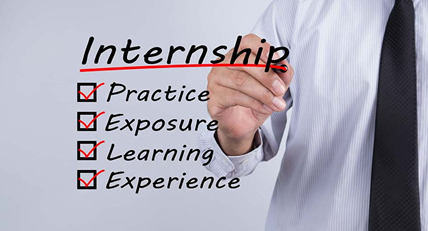
Personally, the third year of the degree has been quite a struggle for many different reasons. The main being the fact we’ve gone online and, although I’ve seemed to have coped with that change well, the last few weeks of the degree felt like a real drag. I always feared that I would limp to the finish line and feel burnt, and that’s exactly what happened. I’m disappointed with this only because of the high standards I’ve set for myself throughout the degree.
And now the hard work begins. My expectations throughout the degree have been that I wouldn’t get a job straight after, and that certainly won’t happen now given the circumstances. But the opportunities I have set up for myself post the degree have me in a good position to succeed as a sports media graduate entering the profession.
Reference List
Mizell, H 2010, Why professional development matters, viewed 17 November 2020, https://learningforward.org/wp-content/uploads/2017/08/professional-development-matters.pdf.
~~~
Quarter Times entry
My internship experience has truly been a blast, an experience that has given me countless moments where I’ve needed to pinch myself to check that I am in fact still in reality.
The internship was probably the driving force behind me enrolling in the sports media degree in the first place, and from the outset I was really keen to work with SEN if the opportunity arose.
And so when I received an invitation to join the guys at Crocmedia to work with the TV production team at Rainmaker and the SEN digital gang, I was pretty excited (the company changed its moniker from Crocmedia to The Sports Entertainment Network while I was there, but I swear this had nothing to do with me).
One of the things I really enjoyed during the internship was the ability to actually go into the building while most other students didn’t have this luxury. To walk into the dining area and see Gerard Whateley munching on his endives with shrimp salad in one corner and Damien Barrett in the other downing his waldorf salad with pickled couscous was quite surreal.
To see how the guys at Rainmaker worked around COVID restrictions was really interesting, including working with hosts and guests coming through Zoom and only allowed a handful in the studio itself.
Personally, I really enjoyed working on the pre-match broadcasts we did for a few teams, including the Western Bulldogs, St. Kilda and Geelong (all of whom lost the next game, but I had nothing to do with this either, I swear).
I also had the pleasure of working on some live broadcasts which were absolutely bonkers hectic, but fun. We did ‘Winners’ and ‘Thrill of the Chase’, with my job being the runner, ushering talent on and off the desk and basically telling people where to go (which I found out I’m good at).
With SEN digital, it’s been a thrill to have my name published on a website for whom I’ve consumed plenty of content over the years. I look forward to having the opportunity to writing more and having randoms on Twitter telling me I’m an idiot.
I’ve loved my time at Holmesglen, I’ve loved my internship experiences at SEN and I loved watching the tiges win the flag again.
Goodbye Holmesglen, I’m off into the real world now.
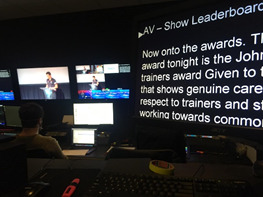
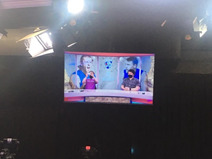
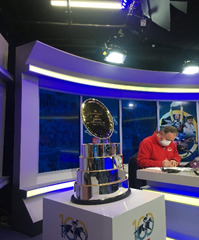
~~~
0 notes
Text
Internship, Skills & Resume Importance
‘Internships offer students an autonomous, multifaceted context of learning which provide a more effective learning environment than traditional classrooms’ (Valo 2000, p. 152).
As we have moved through the first month of this subject, my thoughts surrounding the crown jewel of the degree (the internships) have changed. In the beginning, I joined the course primarily for the carrot towards the end of the degree and have been concerned with how I can make an impression within the industry. However, I am starting to think more about how I can be a quality intern (and potential employee) by exhibiting initiative and tangible skills so that I can be of value to the internship partner.
I’ve gone from thinking about the benefits for myself to how I can be of benefit to an organisation. In turn, this I hope will have personal benefits also.
Personally, my skills set has transformed as a result of the degree. My academic strengths including writing - both academically and more informal - have been enhanced. I do, however, believe there are areas for improvement. We’ve been told by almost every industry professional that has spoken to us about the need to be an ‘all-rounder’. To do this, I need to continue to develop my digital media skills - capturing footage, editing and producing as well as familiarizing myself with emerging social media platform.
On a personal level, I still need to learn how to act professional in a formal setting. I naturally have a larrikin personality that often does not take too much seriously. I understand this needs to be refined, as this may cause me to not be taken seriously within the profession.
‘A Resume is a medium for advertising yourself, it’s the first means in which you use to present yourself as a job applicant and try to claim that you are the best choice candidate to a prospective employer’ (Roo 2015, para. 1).
Honestly, my resume leaves a bit to be desired. Upon the completion of this course, the degree will by far be the most impressive component of my resume.
Because of this, I feel it’s important to try and articulate the person I am and my unique personality traits. As a result of leaving school and heading straight into my families business, I’ve never actually been in the work force officially. Despite this, my life experience and the up-skilling the course has offered me makes me, at the very least, an enticing intern prospect.
My resume needs work to really make it sing. I’ve really only used my current resume for my entrance into my Casey Radio adventures. One of my aims in this particular subject is to get my resume to a point where I think it’s paints me as a competitive intern.
Roo, J 2015, The Importance of a Well Written Professional Resume, viewed 30 March 2020, https://www.linkedin.com/pulse/importance-well-written-professional-resume-roo-resumes-judi-roo/.
Valo, M 2000, ‘Experiencing work as a communications professional: Students' reflections on their off-campus work practice’, Higher Education Dordrecht, vol. 39, no. 2, pp. 151-179, viewed 30 March 2020, https://search.proquest.com/docview/740320473?pq-origsite=gscholar.
0 notes
Text
About me Brent.

Originally from the famous Victorian gold fields town of Ballarat, I (Brent) am embarking on my third and final year at Holmesglen studying the famous Bachelor of Sports Media degree. After completing my first year at Holmesglen to a satisfactory level, my second year was interrupted by an unplanned liver transplant during the semester break. Naturally, this devastating news to me, my family and closest friends I’ve met through the course.
Historically, I have long had an interest in a number of sports, primarily Australian Rules football being a native Victorian. As per family tradition, Richmond was the AFL team thrust upon me. Of course, I had no choice as to which team I followed. Safe to say I wouldn’t have chosen Richmond had I have had a choice.

From a career perspective, I have long been interested in the art of sports commentary. In 2019 I was lucky enough to get an opportunity calling in the Victorian Football League (VFL) for local radio station Casey Radio. While us students studying the degree have been encouraged from day not to ‘pigeon hole’ ourselves, this opportunity has reinforced my want to gain employment in this field.
As mentioned, I am proud of my efforts academically during the first two years of the degree. While the second semester in 2019 was difficult for me personally, I am proud of the fact I was able to keep up and complete the semester relatively unscathed. While I have often prided myself on being able to work in group situations, be a reliable and consistent contributor, obviously the second semester last year was a time in which I couldn’t contribute as I normal.
Heading into the internships in 2020, I am excited to finally reach the pinnacle of the degree and everything that will come from that. More specifically, I am intent on working on my professionalism as I move from a student into the industry. An aim of mine is to make an impression on which ever internship partner takes me on board, both with the practical skills I’ve developed throughout my studies, and the manner in which I conduct myself within their four walls.
My personal preferences in terms of where I’d wish to complete my internships are sports broadcasting companies where I can, at the very least, increase my network and business connections. SEN, Fox Footy and the Herald Sun are obvious candidates. Despite this, I do plan on applying for as many internships as I deem necessary. Having seen the internship showcases of the now graduated students last year, I was surprised as to how much all the students enjoyed their experience as some the lesser internship partners (for example state sports organisations such as Tennis & Basketball Victoria). This something for to begin seriously considering now the internships are fast approaching.
0 notes
Text
Leveraging & Co-Activation
Leveraging and co-activation ideas form an integral part of any organisations marketing endeavors.
‘This brand strategy draws upon the creative to cast a certain image or memory related to the company’ (Huggity 2018, para. 1).
When used effectively, these initiatives can boost brand image and equity in the minds of the consumer, while also having the potential to reap financial dividends.
During the opening ceremony of the 2018 Winter Olympics, microprocessor manufacturer Intel helped change the image of the brand in the eyes of billions around the world by orchestrating a hauntingly majestic drone light show.

With more than 12 billion media impressions in under 12 hours, Intel was soon trending #1 on the internet and subsequently launched the company in the eyes and memories of viewers around the globe.
The dominant view of a sponsorship's is that of a consumer orientation, focusing on ‘brand awareness, to improve the attitude or to influence the purchasing behavior and the sponsor’s sales, to name only a few’ (Demir & Soderman 2015, p. 273).
Effective co-activation activities can lead to the aforementioned increase in positive purchasing behavior for the sponsor.
By allowing potential customers a ‘try before you buy’ opportunity during co-activation events, brands allow themselves to get new products front and center, opening themselves up to potential new customers.
These activation's also bring the possibility to up-sell e.g. Apple convincing an existing customer to upgrade to the latest iPhone.
Lastly, another fine example of sponsorship leverage is the example below involving the Minnesota Vikings and their official science partner 3M.


When prompted, each fan was instructed to place translucent purple film found under their seat over their phone's flashlight to create a purple glow inside U.S. Bank Stadium.
The ideologies behind sponsorship leverage and co-activation can have a resounding effect on the brand image and equity of an organisation which can in turn morph into rewarding financial results.
Demir, R & Soderman, S 205, ‘Strategic sponsoring in professional sport: a review and conceptualization’, European Sport Management Quarterly, vol. 15, no. 3, pp. 271-300, viewed 18 November 2019, https://www.researchgate.net/profile/Robert_Demir/publication/279270523_Strategic_sponsoring_in_professional_sport_a_review_and_conceptualization/links/5673e06e08ae04d9b09be67b/Strategic-sponsoring-in-professional-sport-a-review-and-conceptualization.pdf.
Huggity, 2018, 8 Best Sponsorship Activation Ideas: Humanizing the Brand, viewed 18 November 2019, http://huggity.com/8-best-sponsorship-activation-ideas-humanizing-brand/.
0 notes
Text
Importance of Congruence
‘The old adage that “birds of a feather flock together” is at the core of what congruence means in marketing’ (Fleck & Quester 2007, p. 975).
For any long-standing partnership to be successful, there must be a strong congruent match. This is particularly true in the sports marketing landscape.
When the values, goals and mid to long-term missions of the two partners align, only then can the partnership between sponsor and sponsee be considered ‘congruent’.
Successful (and likewise unsuccessful) congruent partnerships can have both positive and negative effects on brand image if not considered carefully.
For example, an organisation looking to align themselves with a football (soccer) club/brand would have different objectives and values to another organisation looking to partner with a tennis tournament or player.
Soccer reflects an image of a popular sport accessible to everyone.
On the contrary, tennis reflects an elitist and finer image.
Speaking of soccer, a fine example of a successful, long-term partnership between club and sponsor is Manchester United’s deal with Japanese electronics manufacturer Sharp.
United’s shirt sponsor for nearly two decades between 1982 and 2000, Sharp were (somewhat fortuitously) at the forefront of Manchester United’s rise to prominence throughout the decade of the 90′s.
Sharp entered football folklore via the majestic footballing heroics of legends such as David Beckham, Andy Cole and Eric Cantona.
‘Sharp's marketing communications manager Martin Arnold admits that the end of an era in football also marked a slide away for Sharp in the UK’ (Goss 2010, para. 4).
A relevant example of when the ideologies and values of two organisations values ‘clash’ is oft-maligned McDonald's sponsorship of the Olympic games.
McDonald’s, an international fast food giant often under fire for the companies role in the populations obesity crisis, sponsoring a global event preaching athleticism, physical prowess and clean health.
The Olympics have been accused time and again for losing its amateur ethos and selling out to commercialization.
However, its long-standing partnership with McDonald's is certainly one that perpetually leads to raised eyebrows the world over.
Fleck, N & Quester, P 2007, ‘Birds of a Feather Flock Together: Definition, Role and Measure of Congruence: An Application to Sponsorship’, Psychology & Marketing, vol. 24, no. 11, pp. 975-1000, viewed 17 November 2019, https://s3.amazonaws.com/academia.edu.documents/43343374/Birds_of_a_Feather_Flock_Together__Defin20160304-28366-2tdcch.pdf?response-content-disposition=inline%3B%20filename%3DBirds_of_a_feather_flock_together_defini.pdf&X-Amz-Algorithm=AWS4-HMAC-SHA256&X-Amz-Credential=AKIAIWOWYYGZ2Y53UL3A%2F20191117%2Fus-east-1%2Fs3%2Faws4_request&X-Amz-Date=20191117T031423Z&X-Amz-Expires=3600&X-Amz-SignedHeaders=host&X-Amz-Signature=45577a062409e6d41ceecc397277ac18f617946f832b7aeebe84ff125c166bb4.
Goss, P 2010, Sharp: Brand declined when Man Utd sponsorship ended, viewed 17 November 2019, https://www.techradar.com/news/world-of-tech/television/sharp-brand-declined-when-man-utd-sponsorship-ended-676013.
0 notes
Text
Asset Inventory
‘Asset management plans form the cornerstone of an effective asset management system’ (Life Cycle Engineering n.d.)
Every successful business needs to undertake some form of asset inventory to better understand its financial potential relating to each individual (or grouped) asset.
This semester, our VAFA group have worked together to gather a list of assets pertinent to our partner club, which we could then bundle together in the form of different sponsorship packages.
Initially, the group gathered all the contemporary assets including spaces on the new electronic scoreboard, jumpers, shorts, training gear as well as matchday footballs and goal post padding.
With the Glen Eira council owning the facilities at Glen Huntley Oval rather than the Caulfield football club themselves, the group had to think of other assets to include in our inventory.
This meant justifying the clubs’ social media channels as assets.
‘One of the common channels of communication that companies have recently applied in their marketing activities is social media’ (Bilgin, Y 2018, p. 129).
At the time of conducting our asset inventory for the CGFC, the clubs’ social media numbers stood at:
Facebook: 2.2k likes, 2.2k followers
Twitter: 721 followers
Instagram: 1.3k followers
Comparatively, these were some of the highest numbers in Premier B, something our group felt could be a real asset for the club and enticing for potential partners.
Bringing this asset inventory together for our VAFA club was certainly a time consuming exercise, however the group did feel as it was worthwhile and indeed crucial to aid in bundling potential sponsorship packages.
We were told by club president Peter Small and secretary David Gregor that this was something the club had been meaning to do for a while. To be able to complete this task for them and have a foundation list of club assets for the club to have handy made this first assessment all the more rewarding.
Bilgin, Y 2018, ‘The Effect Of Social Media Marketing Activities On Brand Awareness, Brand Image And Brand Loyalty’, Business & Management Studies: An International Journal, vol. 6, no. 1, pp. 128-148, viewed 17 October 2019, 839-Article%20Text-841-1-10-20190221.pdf.
Life Cycle Engineering n.d., Developing Asset Management Plans Creating Value from Physical Assets, viewed 17 October 2019, https://www.lce.com/Developing-Asset-Management-Plans-1666.html.
0 notes
Text
Providing Sponsors With Tangible Benefits
Sponsorship's represent an increasingly large component of integrated marketing strategies, while also accounting for a substantial proportion of marketing budgets of major corporations.
As a result, there is ‘demand by sponsoring organisations for a discernible return on their investment’ (Morgan et al. 2014, p. 4).
Like all successful relationships, there is required to be a certain level of mutual benefits and satisfaction for the partnership to be longstanding.
Nufer & Buhler (2010) argue that majority of the successful sponsorship marriages seen in today's sports sector come as a result of a productive relationship between the sport and sponsor organisation.
There needs to be both tangible and intangible benefits for a sponsorship to deem it worthwhile to align itself with and/or continue its association with an organisation.
This is something our VAFA group have been extremely conscious of when pulling together both our asset inventory and sponsorship packages to be presented to our VAFA club.
Our group considers itself lucky to be working with the Caulfield Grammarians. A club that has many assets that would seemingly be of interest to potential financial partners, the Grammarians celebrate their 100th season in 2020, opening the door for a plethora of sponsorship opportunities.
While our group have worked to put together sponsorship packages in an attempt to attract new partners, we would also like to see an increase in up-sell with loyal existing partners.
To do this, the group have looked to package sponsorship offerings that provide real tangible and intangible benefits (tangible privileges such as logos on matchday Guernseys, goal posts and fence signage and intangible such naming rights to the various events to be hosted by Caulfield during its centenary year).
By dividing packages into four categories (major, platinum, gold & silver), it is our hope maximize potential earnings through these new sponsorship packages.
As mentioned, our VAFA club has the ability to provide its potential and existing financial partners with real tangible benefits that will hopefully in turn entice these partners to maintain their relationship with the football club.
Morgan, A, Adair, D, Taylor, T & Hermens, A 2014, ‘Sport sponsorship alliances: relationship management for shared value’, Sport, Business and Management, vol. 4, no. 4, pp. 1-27, viewed 4 October 2019,https://opus.lib.uts.edu.au/bitstream/10453/30718/4/Sport%20Sponsorship%20Alliances%20Relationship%20Management%20for%20Shared%20Value.pdf.
Nufer, G & Buhler, A 2010, ‘Establishing and maintaining win-win relationships in the sports sponsorship business’, Journal of Sponsorship, vol. 3, no. 2, pp. 157-168, viewed 4 October 2019, http://arquivosclipping.espm.br/clipping/20101130/establishing_and_maintaining_win_win_relationships-13.pdf.
0 notes
Text
Importance of Sport Sponsorship
Corporate sponsorship plays an increasingly crucial role in sports, art, cause, and entertainment organizations’ (Bouchet et al. 2015, p. 200).
Since the turn of the century, sponsorship in sports has become an increasingly crucial element of the business teams and organisations undertake. In 2018, companies around the world spent $65.8 billion on sponsorship deals according to the World Advertising Research Center (WARC).
This sheer amount of dollars spent in the sponsorship sector clearly tells of how important it is for sports organisations or otherwise to attract and maintain these financial partners.
Coming into the subject of Sport Sponsorship, I didn’t necessarily understand the ins and outs of sponsorship's in the sporting realm or how vital they are to the business performances of sports organisations.
Personally, there is keen interest in the first of the four key stages of the sport sponsorship process (Foundation) as I have often wondered just how some of the successful team/sponsorship partnerships (e.g. Geelong & Ford) were formulated in the first place.
With the formulating of our asset inventory and marketing plan, I am looking forward to completing these tasks with the intention of securing our VAFA partner club some new partners.
The second key stage of the sponsorship process (customization) is a critical stage that myself and other members have already spoken at length about. To customize a sponsorship proposal to a potential sponsor is a no brainer, establishing a personal relationship with a personalized proposal for each respective potential partner.
While stages 3 and 4 (Realization & Co-activation) are down the track somewhat, these two stages will be the most exciting for our group and VAFA club if our individual sponsorship proposals are effective in securing the club new financial partners.
Our group has already seen some of the work we’ve done for the Caulfield Grammarians bear fruit, although this semester is certainly a step up. Our group are aware that, if done properly and professionally, our asset inventory and sponsorship proposals could reap major financial benefits for our VAFA partner.
Bouchet, A, Doellman, T, Troilo, M & Walkup, B 2015, ‘The Impact of International Football Matches on Primary Sponsors and Shareholder Wealth’, Journal of Sport Management, vol. 29, no. 2, pp. 200-210, viewed 3 October 2019, https://www.researchgate.net/profile/Michael_Troilo/publication/274569231_The_Impact_of_International_Football_Matches_on_Primary_Sponsors_and_Shareholder_Wealth/links/57c04f9508aeb95224d49d40/The-Impact-of-International-Football-Matches-on-Primary-Sponsors-and-Shareholder-Wealth.pdf.
Handley, L 2018, Sponsorship spending to hit $66 billion worldwide, but most firms don’t know if it really works, viewed 3 October 2019, https://www.cnbc.com/2018/09/25/does-sponsorship-work-deals-value-to-reach-66-billion-in-2018.html.
0 notes
Text
About Me - Semester 1 Reflection
Looking back on semester 1 2019, I am happy with the progress I made individually and as a group regarding our work with our VAFA club.
Coming into the semester I was quite naive about embarking on a sports marketing subject in a sports media degree, however, I have certainly learnt plenty of new ideas and concepts as well as simply becoming increasingly aware of the importance of sports marketing in relation to sports media and sports business.
Our VAFA group leading into the semester spoke about the things we wanted to improve on, including better time management and delegation of roles to ensure a more even contribution.
The group really improved in these two areas last semester, which culminated in a much better document being presented to our VAFA club.
Of course, their is always room for improvement both individually and from the groups perspective.
As is the case with almost all assessments, you can never be too prepared. While the group improved greatly in this regard last semester, I hope we can continue to better our time management skills ahead of the final semester working with our VAFA partner.
The key things I have taken from last semester have been the opportunity to collect market research in real life situations (e.g. match day observations and focus groups), as well as our class room discussions based around specific sports marketing cases that aided my understanding of the topic by way of relevant real world examples.
I look forward to another exciting Sport Sponsorship subject this semester, with the intentions of broadening my knowledge base on the topic and continuing to work productively with my group and the Caulfield Grammarians Football Club.
0 notes
Text
Upon Reflection
Looking back at the marketing subject throughout semester one, I believe I have learn’t in terms of what marketing actually is (that being a mutually beneficial exchange between business and consumer) and why it is such a strategic field to work in.
I have gone from pondering why we’re doing a marketing subject in a sports degree to understand trends, concepts, implications and importance of marketers in the sporting realm.
Cacciolatti (2016) discussing more broadly about the importance of marketing in relation to business performance, with marketing playing a significant role in determining the strategic orientation and performance outcomes of the organisation.
Our VAFA group experienced first-hand the ins and outs of putting together a marketing strategy this semester, founded on market research.
The group members and I found this exercise rewarding, and never felt as though it was a chore. Designing the surveys and focus group questions and proceeding to implement them in a real life situation was tremendously exciting.
Bringing everything together to establish a marketing document for the club was also extremely rewarding. We are fully aware that members of the club’s committee are in such roles as volunteers only, and would never have the time to conduct as thorough research as our consultancy group did.
At the very least, we are proud to have handed the club a document that has the capability to inform them with their strategic decision making moving forward.
As mentioned in previous entries, our group was blessed to paired with a VAFA club whom cared just as much about the assessment as we did. This made for a richly fulfilling semester outside of our lectures.
Admittedly, our presentation could have been better rehearsed. However, I would like to think that, on the surface, there weren’t any cracks that appeared whilst presenting.
I was surprised at how our group took vital information from the document and presented that to our club representatives, whereas most other groups presented the majority of the document.
This semester has been a real eye opener for me and I can only hope my brain retains half the information I have learn’t.

Cacciolatti, L & Lee, S 2016, ‘Revisiting the relationship between marketing capabilities and firm performance: The moderating role of market orientation, marketing strategy and organisational power’, Journal of Business Research, vol. 69, no. 12, pp. 1-41, viewed 13 June 2018, https://westminsterresearch.westminster.ac.uk/download/fddf36196ed0f6475498f5ef2323bfa1341c0dd182f332f81570aea562920a67/258857/Cacciolatti-Lee_2016_JBR_manuscript.pdf.
0 notes
Text
Sports marketing trends & concepts

‘Marketing in the twenty-first century is completely dependent upon how the market changes and innovates’ (Yazdanifard et al. 2011, p. 579).
One of the key things I have learnt in Sports Marketing this semester is how true the above statement is.
While before I may have been quite narrow minded in thinking that marketing and marketers exist to promote and sell a product to a particular audience, this subject has taught me a lot about the strategic thinking behind the term we know as ‘marketing’.
This subject has also taught me a lot in regard to the importance of knowing how and when to look for changing trends and concepts, something that is imperative on the sports marketing so as to not get found wanting or lagging behind in an ever-changing environment.
With the our Sports Marketing Topic Analysis assessment, I felt like I learnt plenty from week to week, both in concepts and contextualizing this with real world examples.
In week 7 I led a discussion around the product expansion grid, focusing on the diversification quadrant (new product into new market).
The riskiest of all four strategies, this really opened my eyes as to how strong an organisation must be before it can consider diversifying itself.
It made me think two things:
1. Once again the strategic thinking behind every businesses decision to diversify, and 2, how any organisation would even get to a point where it is strong enough from a business standpoint to contemplate the diversification strategy.

As mentioned in previous entries, I am rather intimidated by how ‘clever’ this whole marketing caper is.
If nothing else, this subject (and in particular this assessment) has forced me to realize just how crucial marketing is from the baseline of all business production.
‘With so much change in consumer behaviour, largely driven by rapid technological advances, the way marketers must play this crucial sports marketing game has also changed significantly’ (Bashford 2017, para. 4).
When one of my favourite professional sports leagues or teams makes a polarizing marketing decision in the future, I am sure this subject will have helped me to be able to think critically about why they may have done so.
Bashford, S 2017, What you need to know about sports marketing in 2017 and beyond, viewed 2 June 2019, https://www.campaignlive.co.uk/article/need-know-sports-marketing-2017-beyond/1424873.
Yazdanifard, R, Obeidy, W, Yusoff, W & Babaei, H 2011, ‘Social Networks and Microblogging;The Emerging Marketing Trends&Tools of the Twenty-first Century’, 2011 International Conference on Computer Communication and Management, vol. 5, pp. 577-581, viewed 2 June 2019,https://s3.amazonaws.com/academia.edu.documents/35495919/Social_Networks_and_Microblogging__The_Emerging_Marketing_Trends__Tools_of_the_Twenty-first_Century.pdf?AWSAccessKeyId=AKIAIWOWYYGZ2Y53UL3A&Expires=1559475354&Signature=leFK4eyauLHchFvKoWFhRrrztYY%3D&response-content-disposition=inline%3B%20filename%3DSocial_Networks_and_Microblogging_The_Em.
0 notes
Text
Smartphone App.
youtube
This week in EMP I designed a smartphone application for my favorite NFL franchise the Pittsburgh Steelers.
Ibrahim et al. (2014, p.2) smartphones may overtake desktop computers for personal use because of the expansion of the application which is growing rapidly among the smartphone users.
With the rapid rise in use of personal smartphones and tablets, businesses are faced with a plethora of opportunities every day that will radically change how their service or product is delivered and accessed through the organisations application.
According Vividus (2017), in Australia alone 13.08 million people downloaded a mobile app over a 6-month period in 2016.

Some of the benefits for an organisation to invest in a smartphone application include: much faster alternative than mobile web browsing, reinforces your brand by increasing your visibility, quickly connects consumers to businesses they most commonly want or need and simplifying communications by securely, instantly and directly messaging customers.
‘The smartphone has become the great communicator of the twenty-first century’ (Lane & Manner 2012, p. 252).
Any sport organisation or otherwise that doesn’t have an application for mobile phone devices are missing out on the marketing and communication channel these apps provide.
While making the app I learnt some key technical skills, including how to import the Steelers background and layout images I wanted, as well as how to imbed the content I wanted throughout the app (including player images, videos etc).
As a sports consumer, I know how integral it is from a business performance perspective to have a quality, easily accessible app.
I tend to spend much of my time on sports organisations and team apps rather than their websites, and if a league or a team didn’t have an app, sports fans like myself wouldn’t take the organisation seriously.
Ibrahim, J, Chee Ros, R, Sulaiman, N, Che Nordin, R & Yuan, L 2014, Positive Impact of Smartphone Application: Whatsapp & Facebook for Online Business International Journal of Scientific and Research Publications, vol. 4, no. 12, pp. 1-4, viewed 17 May 2019, http://citeseerx.ist.psu.edu/viewdoc/download?doi=10.1.1.663.5992&rep=rep1&type=pdf.
Lane, W & Manner, C 2012, ‘The Influence of Personality Traits on Mobile Phone Application Preferences’, Journal of Economics and Behavioral Studies, vol. 4, no. 5, pp. 252-260, viewed 17 May 2019, https://www.researchgate.net/profile/Chris_Manner/publication/266501073_The_Influence_of_Personality_Traits_on_Mobile_Phone_Application_Preferences/links/588b74b0aca272fa50dd9546/The-Influence-of-Personality-Traits-on-Mobile-Phone-Application-Preferences.pdf.
Vividua 2017, Benefits of mobile apps, viewed 17 May 2019, https://vividus.com.au/benefits-of-mobile-apps/.
0 notes
Text
Working with third parties
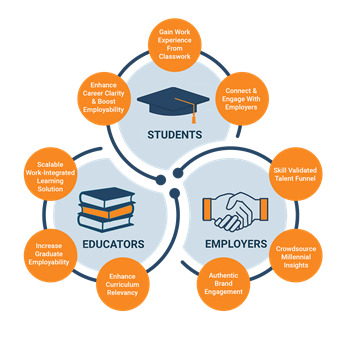
The ability for us students to work with third parties like our VAFA clubs in real-life situations has had an incredible impact on me and how I’ve developed my personal skills, among other things.
According to the Hong Kong Polytechnic University, those who demonstrate practical work backgrounds and evidence of internship experience are prioritized over others when potential employees are trawling through dozens of resumes.
Baker (2013) consolidates this by suggesting that graduates with work experience are more attractive than those without.
Having the opportunity to work in a group with my peers and liaise with representatives from our VAFA club (Caulfield Grammarians) is an amazing opportunity to have here at Holmesglen, and I believe us students have a real leg up on students from other universities studying similar degrees that don’t have the same opportunities to work alongside people within the industry.
The fact that representatives from the club have shown keen interest in what we’re doing has helped immensely also.
John Dewey’s 1938 Experiential Learning Theory argues that contemporary education has a pattern of organisation, consisting of schedules, rules and procedures that in fact inhibit student learning.
According to Roberts (2003), the responsibility of educating students extends above and beyond the teacher and classroom, indeed involving the entire social system.
‘The notion that it takes a village to raise a child is consistent with Dewey's experiential learning theory’ (Roberts 2003, p. 3).
Going forward, myself and our project group could improve in some areas.
The key thing I believe we must improve on is embracing the fact that, although we are students, in this situation we are the clubs’ consultancy.
Of course we need to hear what the club has to say, and correctly interpret what their needs are, but we would do well to stop hanging off the clubs’ words and start suggesting ways in which their club can move forward with a their marketing strategy.
With all due respect, it is us students that are studying the field of sports marketing and marketing in general.
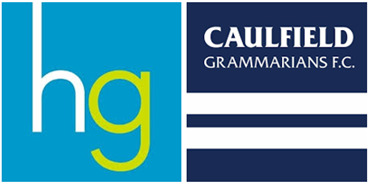
Baker, T 2013, Why Gaining Work Experience Is More Important Than Your Education, viewed 17 May 2019, https://www.huffpost.com/entry/why-gaining-work-experien_b_3750261?guccounter=1.
Hong Kong Polytechnic University, The real-world value of work experience, viewed 17 May 2019, https://www.studyinternational.com/news/the-real-world-value-of-work-experience/.
Roberts, T.G. 2003, An Interpretation Of Dewey's Experiential Learning Theory, University of Florida, viewed 17 May 2019, https://files.eric.ed.gov/fulltext/ED481922.pdf.
0 notes
Text
Week 3 - Interactive Article

https://spark.adobe.com/page/kDHI89AnxpwmD/?w=0_2462&fbclid=IwAR1L28snizev_jqmbrmc81knsKwD0JZGiA3QGFBPu-eV25R64x9ak3p6nOc
This week in EMP we were asked to produce an interactive article for our favourite sports team/athlete. I decided to chronicle Richmond gun Dustin Martin’s amazing 2017 season through interactive imagery and text.
Conlen & Heer (2018) note how certain publications are known for producing high-quality multimedia narratives, often referred to as interactives, which have the potential to engage large audiences.
According to Wardrip-Fruin & Mateas (2017), the next generation of media will be a foundation of art, learning, self-expression and even health maintenance.
For sports fans, this means consuming media that is not text-based and one dimensional. Fans want to consume media where the story is told through exciting imagery and use of videos, and where reading the article is akin to going on a journey.

My Martin article took the readers on a chronological journal of Martin’s season; from his huge game in round 1 right through to his performance on Grand Final day.
In doing so, I learn’t how to composite the article cleanly with one page-wide image flowing seamlessly into the next, and having pages with an image and and text juxtaposition.
The main thing I learned was how simple it is to design an article like this. This simplicity enabled me to get the image I had of the article in my head onto the page.
These interactive articles are crucial for sports organisations from a business perspective.
If audiences have positive experiences consuming these types of media, that is likely to strengthen the relationship between the two that will ideally lead to a financial investment of some sort in the future.
I have enjoyed a few exciting interactive articles on the websites of ESPN and Sports Illustrated, where all sorts of funky imagery was used to complement their longer feature article pieces.
Conlen, M & Heer, J 2018, Idyll: A Markup Language for Authoring and Publishing Interactive Articles on the Web, UIST 2018, viewed May 10 2019, http://idl.cs.washington.edu/files/2018-Idyll-UIST.pdf.
Wardrip-Fruin, N & Mateas, M 2017, The future is in interactive storytelling, viewed May 10 2019, https://theconversation.com/the-future-is-in-interactive-storytelling-76772.
0 notes
Text
Being an effective team member

‘Teams offer many benefits, but in large part these benefits will be realised only in cohesive teams’ (Salas et al. 2015, p. 365).
I believe that I have been an effective team member in our VAFA group projects so far this semester. Personally, there are two key things that I believe define an effective and high performing team member. They are 1) being relied upon to be punctual i.e. get to arranged meetings on time and be there when the group agrees, and 2) be held accountable for any actions that go against the best interests of the group.
I would like to think that is me in a nutshell as a valued team member. Somebody who is always there when expected, and can be held accountable when they’re not.
Personally, I prefer to work in group environments where I can use the fear of letting team mates down to inspire me to be a high performing team player.
“My model for business is The Beatles: They were four guys that kept each others’ negative tendencies in check; they balanced each other. And the total was greater than the sum of the parts.” – Steve Jobs

In my eyes, The Beatles are a prime example of what an effective team looks like. I recall Paul McCartney once explaining in an interview how no idea would ever be passed in the band unless all 4 of them said yes.
This is why they were successful for so long despite the challenging and unique circumstances the group found themselves in.
Going forward, our group still has some things to work. One example would be spreading the workload more evenly. But overall, we have a great group that work well together and are committed to the task, something I’m very grateful for.
As of writing, I am yet to receive my peer feedback from assessment 4. I did, however, enjoy the task of providing my peers with constructive criticism of my own.
Overall it was a challenge, as I consider myself to be mates with most students, and I didn’t want to be too harsh with my criticism. But at the same time, I had to give honest feedback.
Salas, E, Grossman, R, Hughes, A & Coultas, C 2015, ‘Measuring Team Cohesion: Observations from the Science’, Human Factors, vol. 57, no. 3, pp. 365-374, viewed 4 May 2019, https://journals.sagepub.com/doi/pdf/10.1177/0018720815578267.
Mazzetti, M n.d., The Beatles in 2018, Pinterest post, viewed 4 May 2019, https://www.pinterest.com.au/pin/158400111879356605/.
0 notes
Text
Week 9 - Who’s It, Who’s Shit Podcast.
This week’s EMP class called for us to plan, produce & present our own Podcast. We were suppose to record one segment relevant to our VAFA club, but instead we designed our own “Who’s It, Who’s Shit” AFL segment.
The Podcasting phenom has been rapidly rising since the middle of the decade. Blattberg (2014) notes how, towards the end of 2014, many articles were written proclaiming that podcasting had entered a new golden age. The graph below shows the steady increase in Podcast consumption in the US from 2008-2016:

Several prominent radio producers have indeed left their public or commercial radio positions to concentrate on using their expertise to produce high-quality audio podcasting. As a result, we are currently experiencing somewhat of a podcasting renaissance.
One of the real advantages of podcasting is the ability to offer personalised, on-demand content. Furthermore, producers are ‘increasingly performing the cultural work of filtering and constructing niche audiences by directing listeners towards content’ (Morris & Patterson 2015, p. 227).
Sports fans are now faced with a digital plenitude, with a whole new way of consuming tailored content from their favourite sports in an ubiquitous and timely fashion.
Any sports organisation that doesn’t have a dedicated podcast for its consumers in the twenty-first century is leaving fans in the dark.

We had a lot of fun making our podcast, however there certainly some areas for improvement, with the biggest concern being using better equipment to capture our sound.
We all learnt some valuable lessons in the editing stage, including how to upload it in the first instance, but also how to normalise the audio, edit some parts in and out, add other audio bites and utilise fade ins and fade outs.
With podcasting being used as a way for organisations to increase their relationship with consumers, I’m hoping this will be a domain where I can further my skills and one day produce and edit a podcast of my own.
Blattberg, E 2014, Podcast enters a new golden age, viewed 3 May 2019, https://digiday.com/media/nielsenes-rise-podcast/.
Edison Research 2016, Percentage of Americans who have listened to a podcast in the past month has increased steadily since 2013,Line graph, viewed 3 May 2019, https://assets.pewresearch.org/wp-content/uploads/sites/13/2016/06/30143308/state-of-the-news-media-report-2016-final.pdf.
Morris, J & Patterson, E 2015, ‘Podcasting and its apps:Software, Sound and the interfaces of digital audio’, Journal of Radio and Audio Media, vol. 22, no. 2, pp. 220-230, viewed 3 May 2019, https://s3.amazonaws.com/academia.edu.documents/40682545/19376529.2015.1083374.pdf?AWSAccessKeyId=AKIAIWOWYYGZ2Y53UL3A&Expires=1556861748&Signature=L5aqyjCNlcyzaVidK9e%2Fmu1Zaig%3D&response-content-disposition=inline%3B%20filename%3DPodcasting_and_its_Apps_Software_Sound_a.pdf.
0 notes
Text
Week 7 - “Low-light” Video
youtube
This week in EMP, my video production skills were put to the test. I didn’t have much experience previously with editing video content, so this workshop was very helpful in allowing me to acquire the necessary skills required to produce and distribute video content on social media.
We were tasked this week to produce a video of our top 10 sporting highlights from 2018. I added a little twist, producing a video of the top stuff ups from the mistake-laden 2018 Pittsburgh Steelers season.
Copperman (2016) notes that any team will tell you that a devoted, engaged fan-base is key for a successful sports organisation holistically. As a result, the social media manager is basically a quarterback regarding online fandom.
The use of video content by professional sports organisations has risen sharply in the wake of the Web 2.0 era. According to Cha et al. (2007 p.1), ‘the advent of user-generated content (UGC) has re-shaped the online video market enormously’.
Quality video content allows fans to feel closer to the action, like they’re going behind the scenes and can arouse an entire fan-base before a big match. This type of digital media content can also help fans that feel detached from a team due to geographical reasons etc, making them feel like they are still a part of the team and the moment.
Below is one of my favourite pieces of video content, produced by the AFL on the eve of the 2018 season;
youtube
While images can tell a thousand words, there is no telling what a video such is this can do to trigger emotions, both good and bad. That’s where video content reigns supreme.
While I doubt any sports team would be expected to produce a video of blunders like mine, this is a great example of fan having the freedom and ability to produce content concerning their team, and using that video to reflect their own feelings and opinions towards their team.
I’ll let the viewers work that out regarding my Steelers video.
AFL 2018, Richmond - Don't Believe In Never - AFL 2018, YouTube video, 1 April, viewed 16 April 2019,https://www.youtube.com/watch?v=9DDCg5z8grk.
Cha, M, Kwak, H, Rodriguez, P, Ahn, Y & Moon, S 2007, I Tube, You Tube, Everybody Tubes: Analyzing the World’s Largest User Generated Content Video System, viewed 16 April 2019, https://www2.cs.duke.edu/courses/cps214/compsci514/cps214/spring13/lectures/lecture22.pdf.
Copperman, A 2016, Winning Sports Social Media Marketing: 21 Ways to Engage Fans Online, viewed 16 April 2019, https://blog.adobespark.com/2016/09/19/winning-sports-social-media-marketing-21-ways-to-engage-fans-online/#.
0 notes